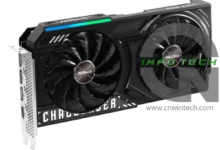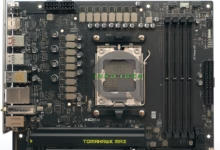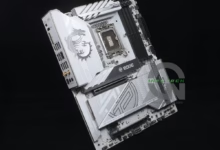
- Priced at USD 205, Realme Narzo comes with a design that can be said to be the taste of a middle-class smartphone.
- Realme itself offers more mid-range smartphones, does Realme Narzo offer a different experience?
Review realme Narzo. Realme recently introduced a new sub-brand in my country which is claimed to remain focused on offering the best performance at affordable prices. They brought realme Narzo, which in our opinion is Realme’s weapon for a gaming experience at an affordable price.
Design Review realme Narzo
We tried the Realme Narzo Just Black color series. The rear body has an exclusive design that reflects light. This area will display a blue line as a light reflection effect. There are also four rear cameras with frames that are commonly found on Realme smartphones.

There is no fingerprint scanner in the back area because Realme Narzo moved this feature above the Power button on the right side. Even though it’s not a new thing, this design actually makes it look a bit luxurious.
This smartphone provides a screen measuring 6.6 inches of Full HD Plus resolution with a refresh rate of 90Hz. None other than this ability to support the gaming experience, but the refresh rate capability cannot be adjusted manually or works automatically.

Realme Nazro puts the front camera hole in the upper left corner of the screen which carries 16MP capabilities. On the left side of the body there are Volume buttons and SIM tray. This device provides a separate Dual-SIM tray with microSD, not hybrid.
On the bottom side, Realme Narzo still has a 3.5mm audio jack even though it uses USB type-C. The speaker grille is placed next to the USB-C port so that the fingers will be covered when the device is in a horizontal position, aka playing games.

Interface and Features Review realme Narzo
If you follow the Realme smartphone reviews on CnwinTech then there is nothing we can explain more about the interface on Realme Narzo. This device still uses Android 10 and Realme UI so there is no different appearance.

This smartphone has security features in the form of a fingerprint scanner and a face scanner. Gaming features such as Game Space are also still the same as the dashboard arrangement that is no different like other Realme devices that adopt Realme UI.

Unfortunately, you will not find the NFC feature because Realme Narzo is not a device with a price that includes providing this feature.
Camera Review realme Narzo
Realme Narzo is not limited to presenting specifications that can be sufficient weapons for playing games. The device turns out to be equipped with a camera with pretty good photo results. We think this smartphone provides the ideal gaming and camera package.


Realme Narzo has four rear cameras with 48MP main lens capability, 8MP ultra-wide-angle lens, 2MP macro lens, and 2MP B/W Portrait lens. On the front camera, there is a 16MP capability.


According to CnwinTech Lab, the camera’s capabilities are reliable, and quite good in its price class. The camera supports ultra-macro mode, 48MP, pro, and night mode for users who want features that support night view photos.

Performance Review realme Narzo
Realme Narzo only comes with one specification variant, namely 4GB RAM capacity and 128GB internal memory. The combination of the two in our opinion is very sufficient for smartphones in its class. The chipset used is the MediaTek Helio G90T which is known to target the gaming experience.
Testing CnwinTech Lab on Realme Narzo and comparing it with other devices shows that its performance is quite satisfying at competitive prices. Even though seeing from the outside this device has an ordinary design that is on the market.

In a battery life simulation test using PCMark for Android, Realme Narzo was shown to last for almost 11 hours with a screen brightness level of 20 percent. The device is equipped with a 4,300 mAh battery with 30W fast charging.
These results may vary under daily use but you can get an idea of the device’s power-saving capabilities. We turn to the experience of playing the PUBG Mobile game. Realme Narzo can present HD graphics quality at high frame rates.

However, there is no support for the Anti-Aliasing feature in the PUBG Mobile graphics settings due to device factors. Looking at real-time data on the Game Space dashboard, the PUBG Mobile game can run stably at a frame rate of 30fps. This result in our opinion is quite satisfying.
Conclusion
We think that Realme Narzo is interesting to have if you want to taste other products from Realme, which we think are a bit confusing segmentation among other Realme series. This also applies to the design.
Realme Narzo has a design that we think is normal and no different from other Realme series. Even so, this device provides a good combination of gaming and camera capabilities.
| Specifications | realme Narzo |
|---|---|
| Processor | MediaTek Helio G90T |
| OS | Android 10 + Realme UI |
| RAM | 4GB |
| Internal Memory | 128GB |
| Camera | Rear Camera: 48MP+8MP+2MP+2MP Front Camera: 16MP |
| Battery | 4.300 mAh, fast charge 30W |
| Display | 6,6 inch IPS LCD Full HD Plus |
| Price | USD 205 |
Check our store if you are interested to buy this realme Narzo with great deals and other parts accessories there. You can also click the Shop Now button below to buy it on external vendors.










